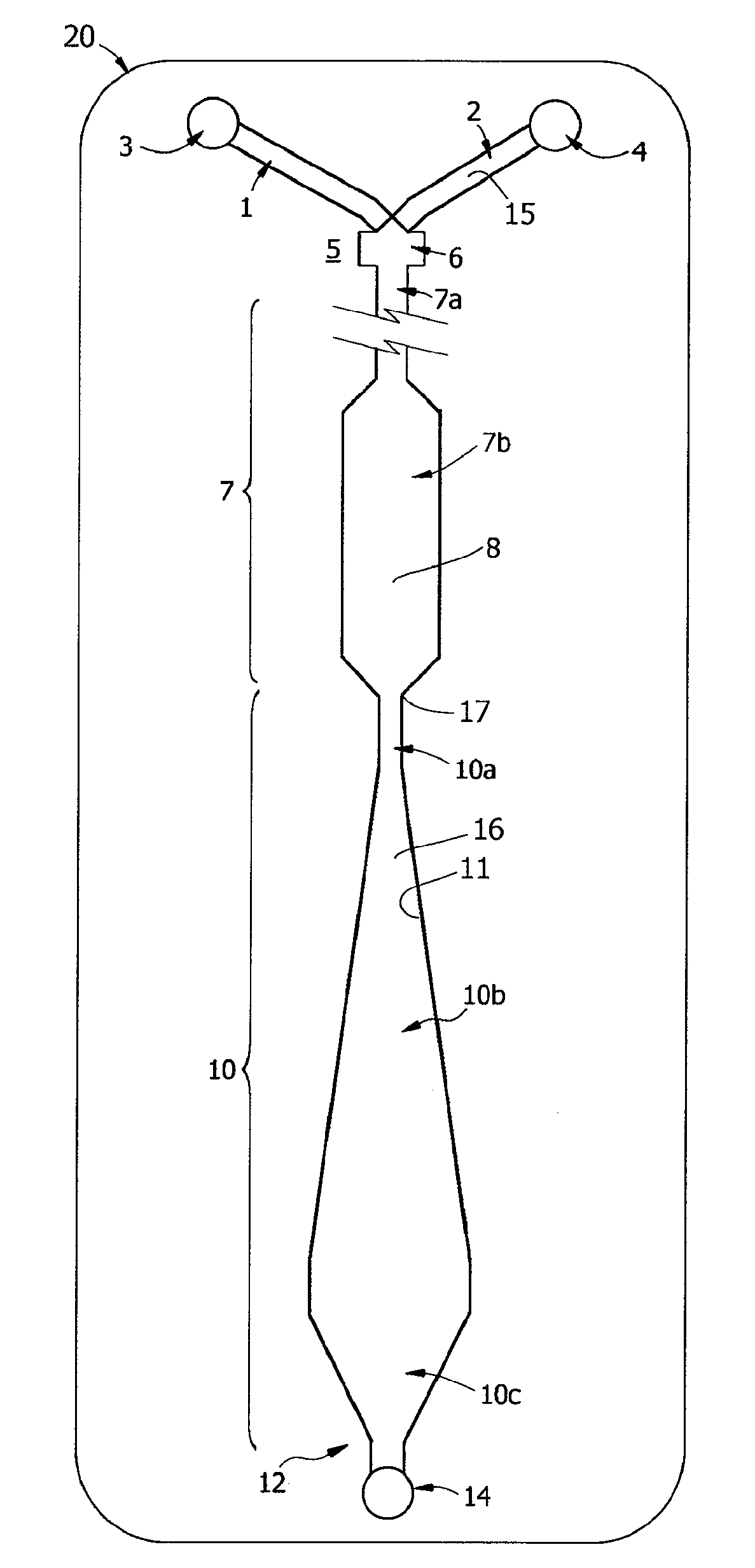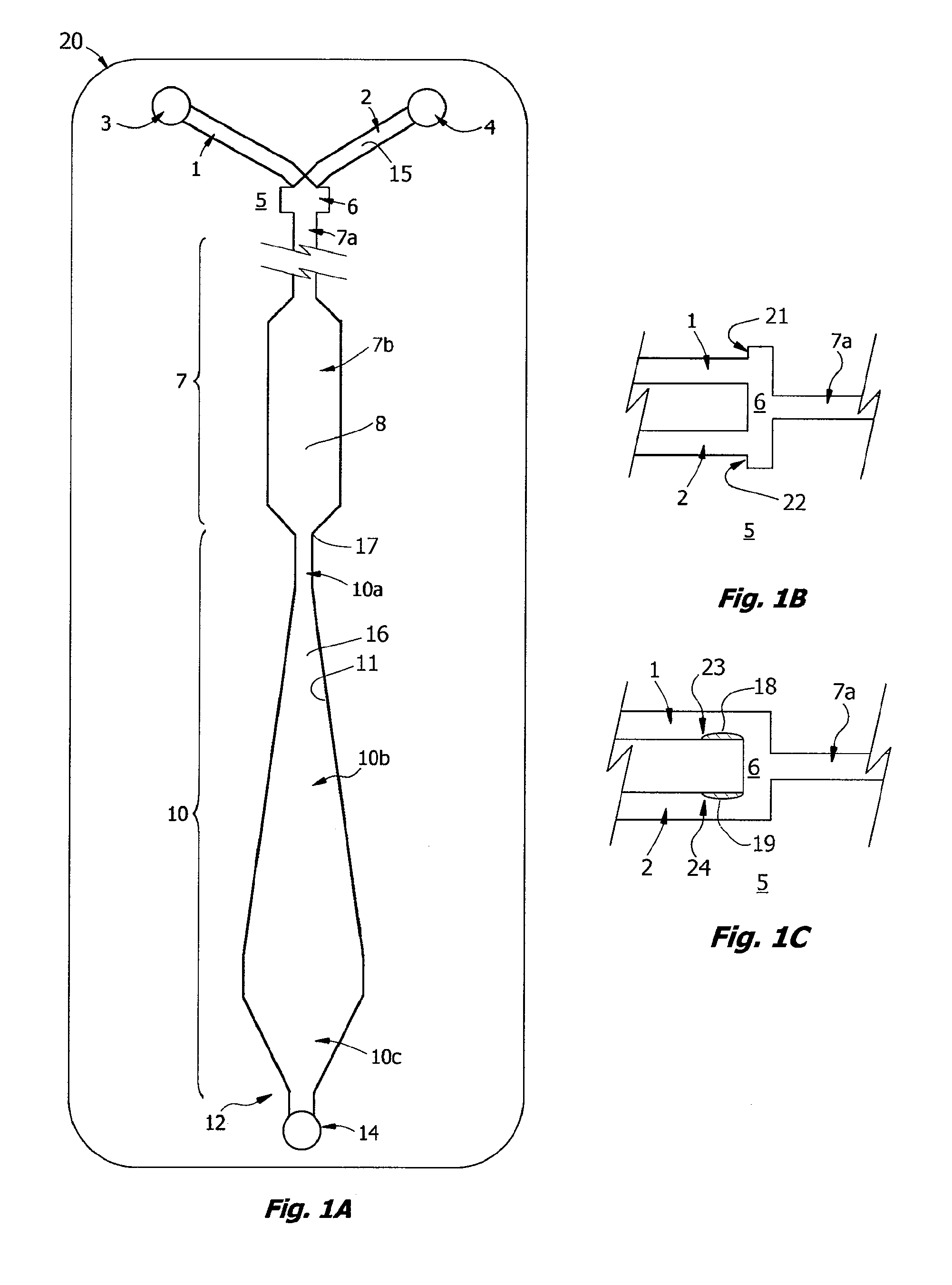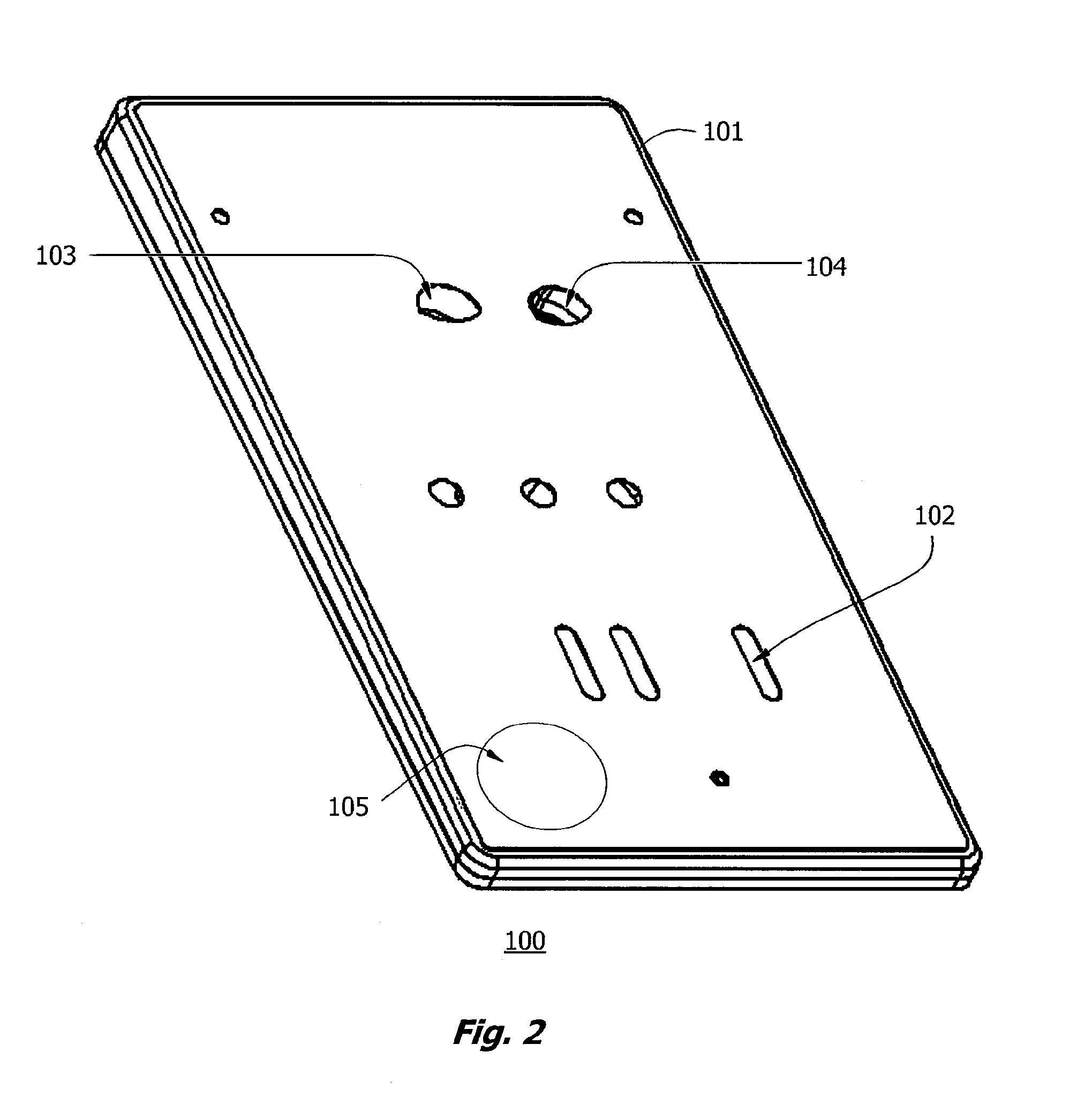Microfluidic apparatus and methods for performing blood typing and crossmatching
- Summary
- Abstract
- Description
- Claims
- Application Information
AI Technical Summary
Benefits of technology
Problems solved by technology
Method used
Image
Examples
example 1
[0223]A prototype of the ABO / Rh cartridges of the invention, essentially the cartridge of FIG. 9, was fabricated by lamination and tested in a clinical trial. Each disposable cartridge contained three separate reaction channels and all on-board reagents testing a blood specimen for A, B and D antigens. Blood collected with EDTA or citrate was first tested by a reference laboratory and then by ABO and Rh typing with the prototype design. For the testing protocol, the cartridge was first placed on a flat surface and an on-card foil reagent pouch containing rehydration buffer was ruptured so that all three reagent inlet lines, each of which contained a dried antiserum in a rapid rehydration matrix, were filled. The volume of buffer used in the test was about 80 μL and a sample of 30 μL blood was used for each test. Blood was added in the sample well and allowed to fill the sample distribution manifold so that all three channels were primed. Both reagent and blood filled the...
example 2
Weak Agglutinins
[0226]Known “weak A” specimens and known “weak D” blood samples were tested by the protocol of Example 1, the ABO / Rh Card was able to correctly type 2 of 4 weak D samples and 2 of 3 weak A samples within 60 sec and without 37° C. incubation.
[0227]For blood typing with Anti-D antibody, linear velocities in the reaction window of less than about 0.2 mm / s, corresponding to a Reynolds Number Re of about 0.01 for blood, were found not to be useful. Reynolds Numbers in the range of 0.1 to 1.0 for blood are associated with agglutination in less than 30 seconds. These Reynolds Numbers correspond to linear velocities in the range of 2 to 20 mm / s, most preferably in the range of 2.5 to 5 mm / s. These numbers roughly correspond to what is termed here transitional or “near-creeping flow” where Re<10 or perhaps in the transition range from creeping flow to laminar flow, depending on the viscosity. At lower viscosity, such as for water, these velocities correspond to Reynolds Numbe...
example 3
Inverted Cartridge Test
[0229]Rehydration buffer and blood sample were primed in a cartridge as described in Example 1 and the cartridge was inverted face down before being placed flat on a table. By sliding the device so that it was partially placed over the edge of the table, the diaphragm pump could be accessed and the assay initiated, essentially following the protocol of Example 1. The assay resulted in the correct blood type being determined within 60 sec. Unexpectedly, this indicates that the HLFD interface reaction between blood and antibody of the present invention is not dependent on gravitational settling of the erythrocytes as described by Klein in U.S. Pat. No. 6,488,896.
PUM
 Login to View More
Login to View More Abstract
Description
Claims
Application Information
 Login to View More
Login to View More - R&D
- Intellectual Property
- Life Sciences
- Materials
- Tech Scout
- Unparalleled Data Quality
- Higher Quality Content
- 60% Fewer Hallucinations
Browse by: Latest US Patents, China's latest patents, Technical Efficacy Thesaurus, Application Domain, Technology Topic, Popular Technical Reports.
© 2025 PatSnap. All rights reserved.Legal|Privacy policy|Modern Slavery Act Transparency Statement|Sitemap|About US| Contact US: help@patsnap.com



